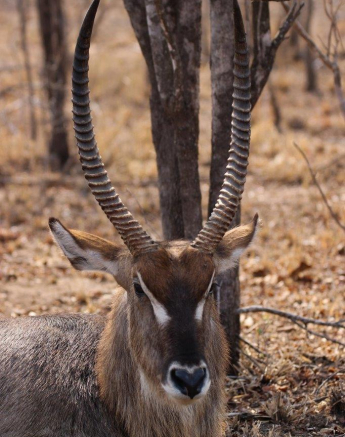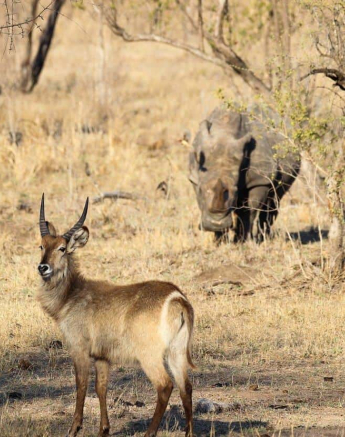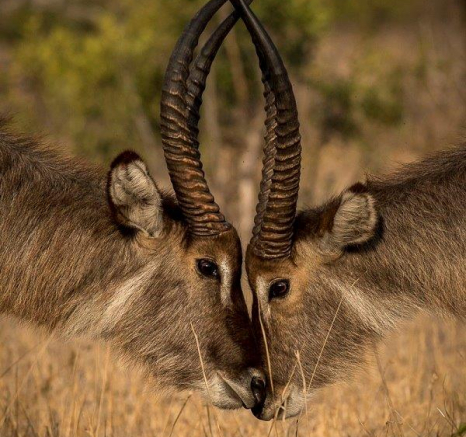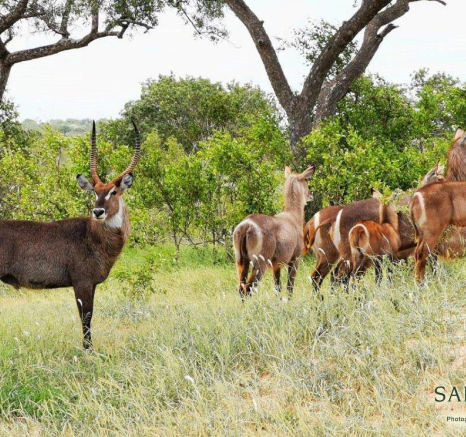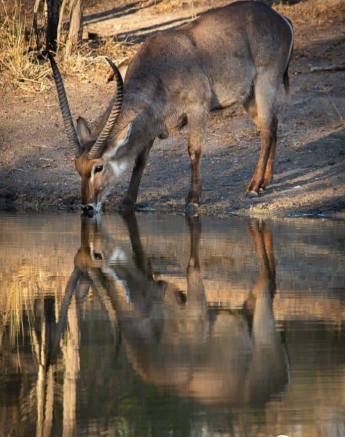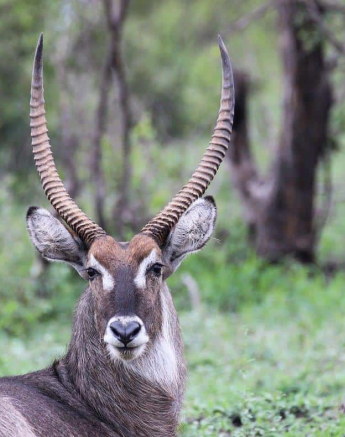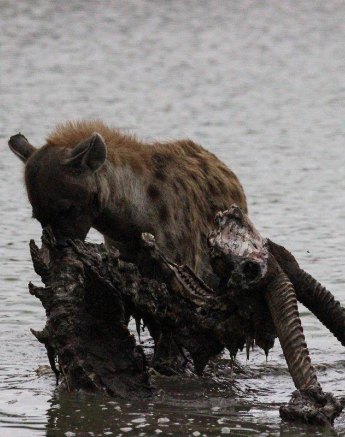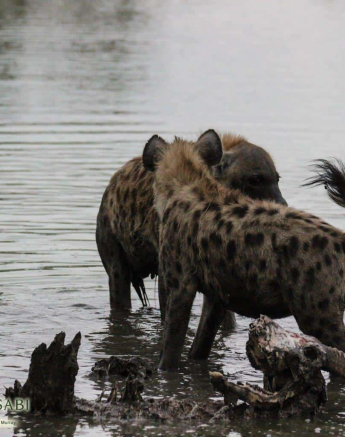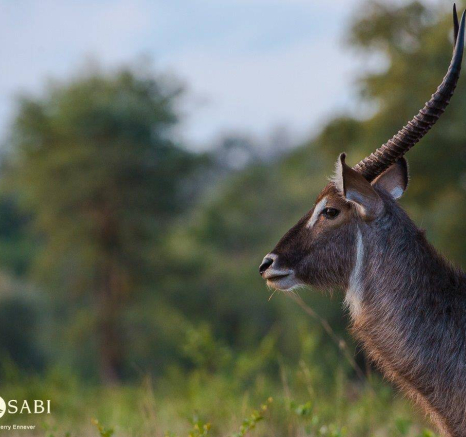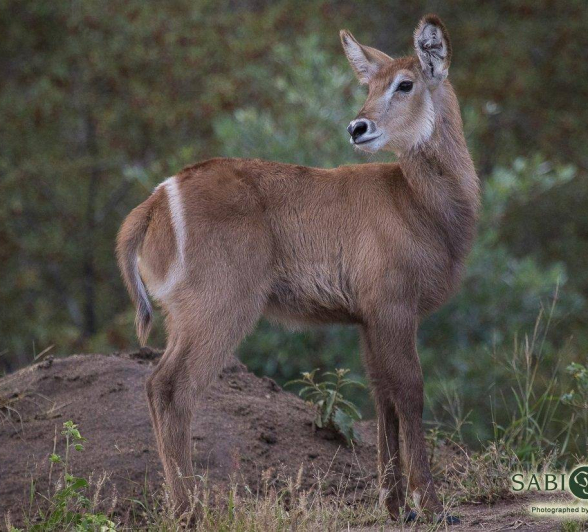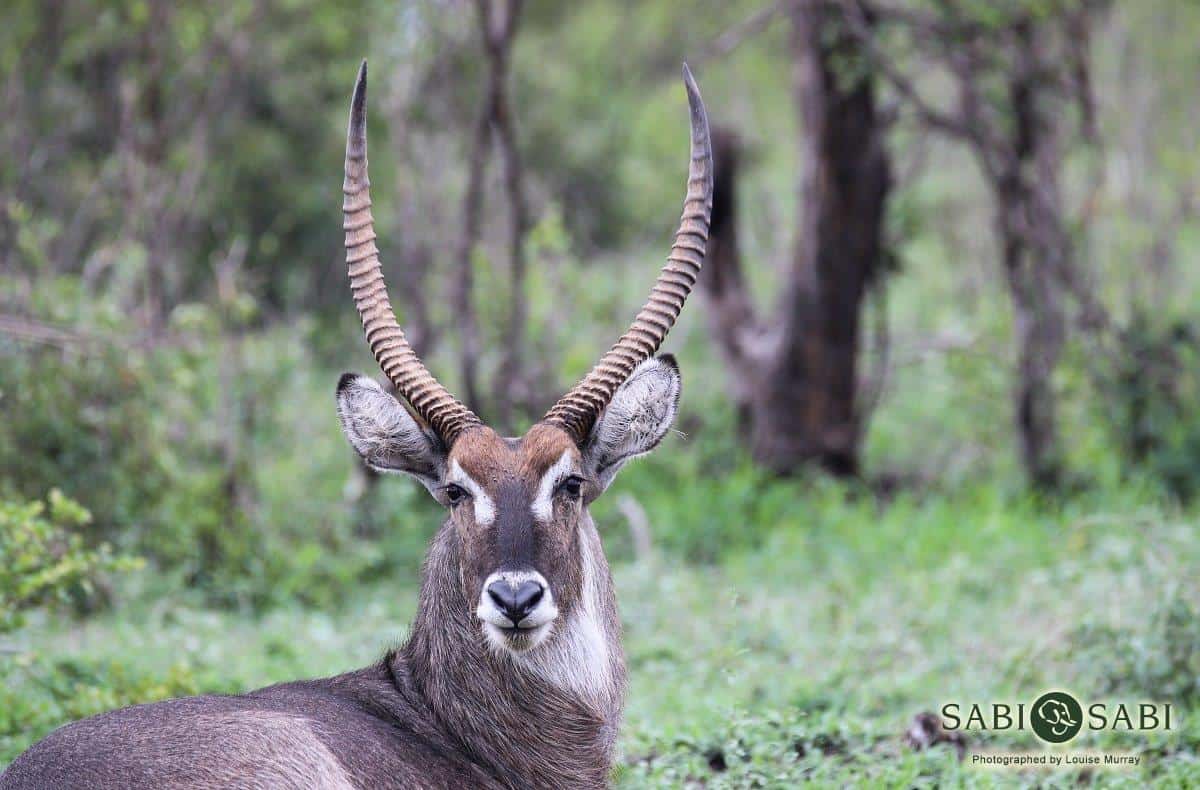Waterbuck
on Feb 08, 2019Species name: Waterbuck
Scientific name: Kobus ellipsiprymnus
Weight: Male: ± 270kg - Female: ± 200kg
Shoulder height: Male: ± 1.7m - Female: ± 1.1m
General Habitat: Open grasslands and woodland savanna
Diet: Bulk grazer but will also browse; water dependent (animals that need to drink water on a regular basis)
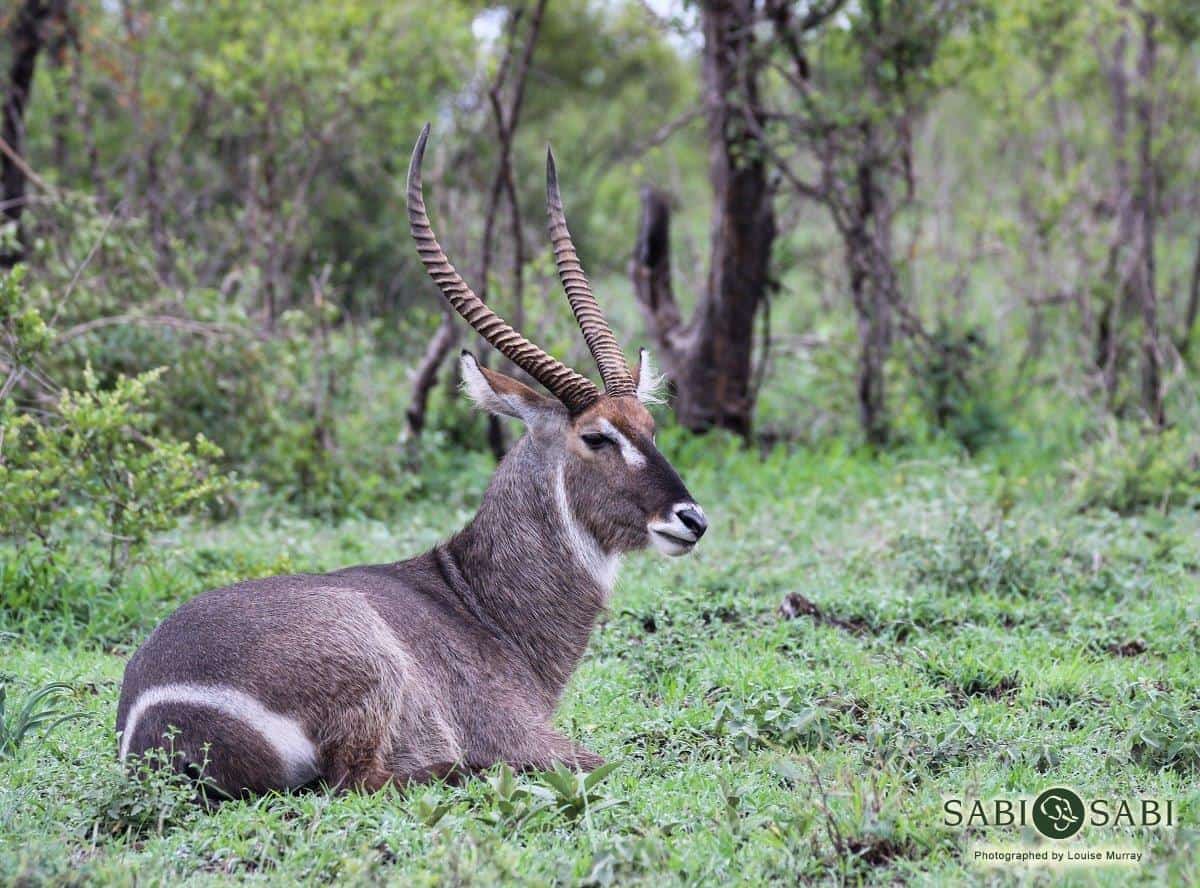
We have an abundant range of different antelope species here at Sabi Sabi. The one special and iconic species is the waterbuck which we can find all over the reserve, but typically we find them on the southern part of our reserve all the way down to the Sabie River.
Hence their name, waterbuck tend to hang around areas where there is a lot of water, especially being water dependent animals. Bulls (males) in particular, will hold a territory where there is an abundant amount of water and food to attract females - he will only hold this territory in breeding seasons. If males are not holding a territory, they tend to form a bachelor herd for survival.
Cows (females) and calves form a nursery herd and females will remain in the natal herd. Female have a gestation period of 9 months and give birth to one calf (although twins have been recorded). Waterbuck have a lifespan of 11-15 years. Males are the only ones that will have horns, which are long and curved with ridges or rings along them to help with slipping when fighting for territory.
The best way to immediately identify a waterbuck is by the iconic white ring around its bottom, almost looking like a target. There have been many discussions as to why they have this marking, but the best answer is that it is used as a “follow me” sign like most animals will have.
There are many theories, myths and beliefs regarding waterbuck... It is believed that because waterbuck are so hairy (long coarse hair), this helps them in water whereby the hair is designed much like a straw and is hollow in the middle, helping with their buoyancy. Another belief is that the sebaceous gland which is situated all over the body, makes their hair greasy and water resistant. This gland, when released, sends out a pungent aroma and a common myth is that this is a defense mechanism against predators and that it makes the meat taste bad. I do see how this could make sense, but through my guiding career, I have seen many different predators actively hunt, kill and eat waterbuck.
My Memorable Sighting
Waterbuck are an interesting species of antelope to see as they look so different. I always love to point out to my guests that pungent smell as its quite easy to pick up.
My last species blog was on spotted hyena and I thought this sighting was fitting... A month or two ago we found a male waterbuck sitting in a dam and at first, we thought he was cooling off, only to notice that he was trying to flee from some predators - Spotted hyenas. They were lurking around the water waiting for him to make a move. He never did. He stayed in the water, using his horns as defense when approached. A day went by and he was still in the water. Unfortunately, not long after that and he had met his fate and we believe he got exhausted from the sun and no food and that’s when the hyena’s patience paid off and they took full advantage of his weak state.
Photo Content
